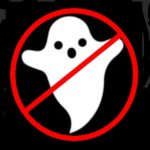Consider the task of performing a capacitance test using an LCR meter or a good multimeter such as the Fluke 287 True RMS Multimeter. If the capacitor under test is an electrolytic or film-based device, the main measurement concern is often just ensuring the capacitor is not under power or doesn’t have a stored charge–electrolytics in particular can store and release large amounts of current at high voltage after an extended amount of time. So a primary measurement task is to first ensure any hazardous stored voltage is bled off to avoid severe shock. This done, you should be able to attach a multimeter or LCR meter and get a capacitance measurement.

This effect is called voltage coefficient of capacitance or VCC. It arises in Class two and Class three MLCCs. (The Class two and three monikers denote capacitor dielectrics with a high permittivity which gives these devices high capacitance.) The capacitance of these devices drops as applied dc voltage rises. This capacitance 

Thus VCC can be particularly acute in super-small MLCCs that necessarily have thinner dielectric layers. A further point to note is that ac voltages also cause electric fields within the MLCC dielectric. The magnitude of the electric field on each layer is proportional to the peak ac voltage across the MLCC. So capacitance can change with the applied ac voltage as well as with applied dc voltage. Thus for making an accurate capacitance measurement, the ac voltage of the meter should be the same as that specified in the MLCC datasheet.
Finally, if capacitance sensitivity to voltage is an issue, consider going to a Class one MLCC. These devices have a dielectric based on CaZrO3 which is a paraelectric material. These capacitors provide minimum change or drift in capacitance with temperature and voltage. The paraelectric dielectric material has a relatively low permittivity, so their capacitance values are generally in the low picofarad to microfarad range.






Leave a Reply
You must be logged in to post a comment.